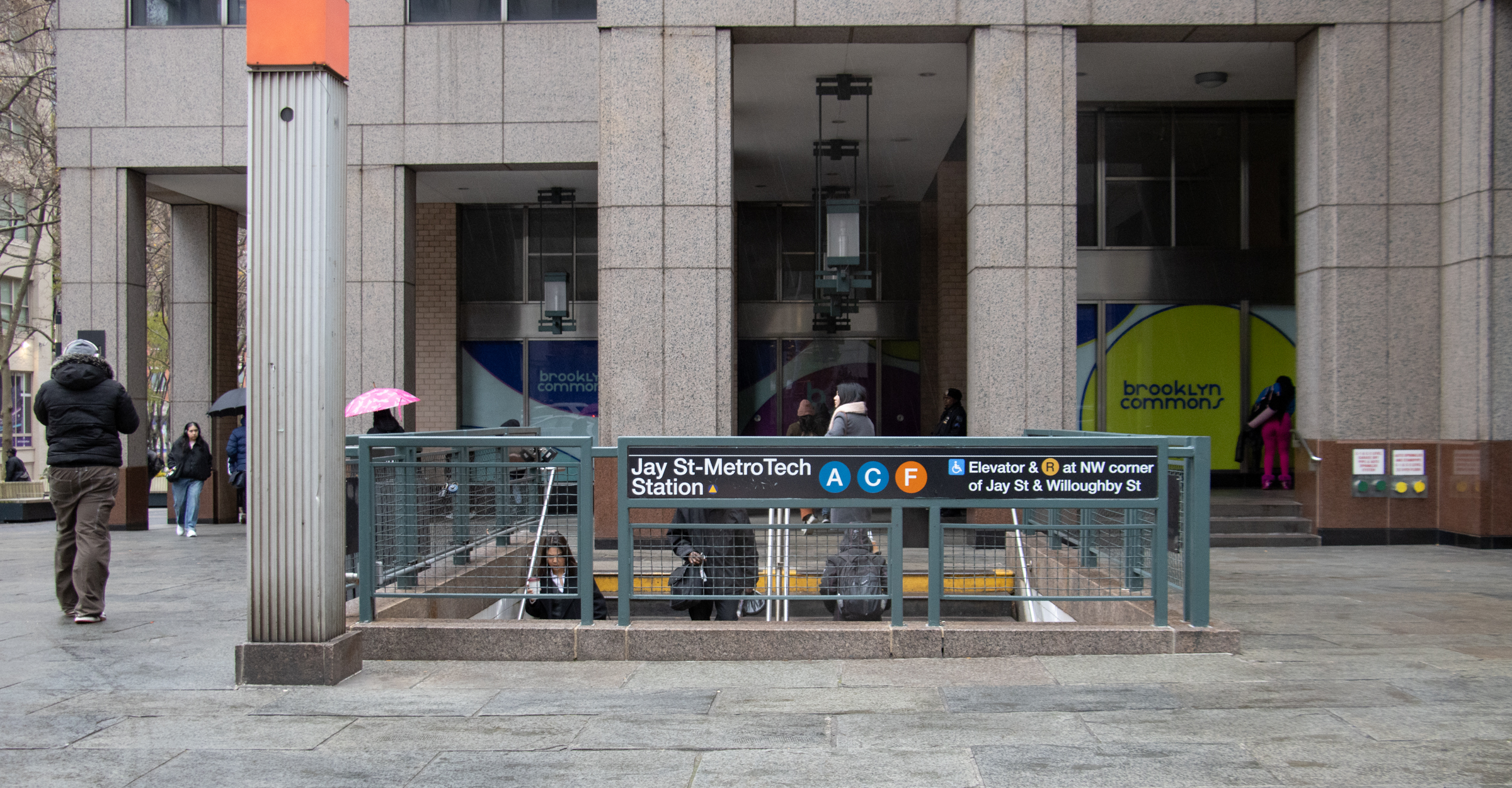Inside Third & Bond: Week 72
In 1948 the American Public Health Association predicted that the garbage disposal would cause the garbage can to ultimately follow the privy and become an anachronism. This prediction was made some twenty years after the garbage disposal was invented but fifty years before garbage disposals would be legalized in New York City. The garbage disposal…


In 1948 the American Public Health Association predicted that the garbage disposal would cause the garbage can to ultimately follow the privy and become an anachronism. This prediction was made some twenty years after the garbage disposal was invented but fifty years before garbage disposals would be legalized in New York City. The garbage disposal was meant to be a healthier way to dispose of kitchen scraps resulting in less vermin and stench. The downside was that sewage systems had to deal with considerably more organic material than ever before. Today, around 50% of American households have garbage disposals, most of which were produced by the InSinkErator company. Not even in those households has the garbage can disappeared but the garbage disposal’s popularity has fluctuated.
Well, the garbage disposals maintain steady popularity at Hudson. From the beginning, we planned to have garbage disposals in every kitchen sink at Third + Bond. Then, as we were running through the cabinetry bids, we came across a smelly problem. The cabinetry designed for the kitchens does not have a specific location for a garbage can (or recycling). The cabinet beneath the sink is too small given the disposal to provide room for a regular sized kitchen garbage can. Other under-counter cabinets are too far from the sink to be practical for garbage or are needed for things like silverware drawers. The result: residents would have to set out a freestanding trashcan in the kitchen, use a smaller can beneath the sink, or we have to figure out a redesign for the cabinetry.
The dirty little secret of most developments, even with beautiful kitchen renderings, is there’s no place to put a garbage can…
(Continued below)
A lot of buyers don’t worry about it until they are unpacking. Since we have open kitchens, the idea of a trashcan even a fancy stainless steel one sitting at the edge of the counter is less preferable. Some of the kitchens, such as the U-shaped ones, don’t have an obvious place to put even a freestanding trashcan.
At our office we have pull-out drawers that accommodate two trashcans and two recycling cans. It’s great for keeping the leftover tuna fish sandwiches from stinking up the lunchroom. As we were refining the cabinet bid for Third + Bond we realized that this would be a great detail to add. It’s not the kind of thing that will earn a higher sales price on its own. But it is the kind of detail that raises the overall quality of our product.
That is, if we can make it work.
What do you think? If it’s either garbage disposals or hidden, full-size trashcans, then which should win? Does it matter how big the kitchen is or how it’s laid out? Does it matter if the unit is a 3-bedroom duplex upwards of $1 million or if it’s a studio priced around $300,000?
Wherever we can have both, we will. But if we can’t have both, what should we use as our deciding criteria?
Inside Third & Bond: Weeks 1-71 [Brownstoner]
Cartoon from ASTC.org
From our lawyers: This is not an offering. No offering can be made until an offering plan is filed with the Department of Law of the State of New York.”





maybe i can help – 20 years in NYC’s recycling/waste management field; currently handle environmental affairs locally and nationally for insinkerator, meaning i spend most of my time talking about food waste/scraps with state/local agencies, trade groups, enviros, etc.
1. Disposers fully legal in NYC homes since 1997, following decade of study and pilot project; previously legal in newer areas of city. Battery Park City requires disposers in last set of ‘green’ residential towers; even NYCHA is installing them.
2. 60% of US homes have at least one; 80%-90% of new homes, including most rated ‘green’; new National Green Building Standard awards one point for including. Fast-growing international acceptance, esp in countries challenged by organic waste issues; Stockholm just eliminated restrictions and surcharges; Worcestershire County (UK) offers 80 pound subsidy for their installation
3. Food waste @ 15% of NYC’s household waste; food scraps @ 70% water, which makes it heavy, odorous, messy, etc.
4. Food scraps loaded into garbage trucks go to transfer stations and then to distant landfills; methane emissions from landfills a significant source of potent greenhouse gases, which is inefficiently captured. Export costs now over $100/ton.
5. food scraps pulverized in a disposer travel easier through sewers, in a matter of hours reaching the city’s 14 wastewater treatment plants; at most, energy is captured for on-site use; since NYC stopped dumping sludge in ocean in 1992, nearly all sludge processed into fertilizer products, most of which meets EPA Class A standards for returning organics to soil.
6. in our 5-6 person household, we’ve not put ANY food scraps at curb since ’97; the 20% of our waste that isn’t recyclable/recycled is mostly plastic packaging and soiled paper; local squirrels don’t bother our bags, and mouse problem under sink ended.
7. Disposers moderately simple to install, and a no-brainer when remodeling a kitchen. Average cost @ $150 for appliance that will easily last 10-12 years; newest models can handle everything, quieter, fewer jams, etc.
glad to answer questions on/off-line
I have had a garbage disposer for years. It’s convenient. Coffee grinds, egg shells, left over scraps of food. I have never had any trouble, and since you are not putting anything organic in the trash, it doesn’t smell and you don’t have to throw it out every day or use as many plastic garbage bags.
What’s the controversy?
I dream about in-cabinet composting…
we have a kitchen with a freestanding garbage can and almost daily i dream of in cabinet recycling and garbage…never dream about garbage disposal…
Hello Snark, nice to meet you.
Snarky, Biff, snarky.
I find it humorous that the topic of garbage has resulted in by far the most posts I’ve ever seen in this feature.
Having lived in California, I am of the opinion that disposals are over rated. Often people put more in them than they should, which just leads to a costly visit from the plumber. Hidden trash cans is the way to go!
bayridgegirl: HILARIOUS!!!